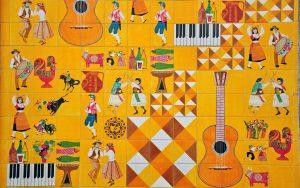
Introduction:
Spanish and Portuguese are two of the most spoken languages in the world, both originating from the Romance branch of the Indo-European language family. While they share many similarities due to their common Latin roots, they also have distinct differences that reflect the unique cultures and histories of the regions where they are spoken. In this blog, we will explore the similarities and differences between Spanish and Portuguese, from their linguistic features to their cultural influences and beyond.
Language:
- Origins and History:
Both Spanish and Portuguese evolved from Vulgar Latin, the vernacular spoken in the Roman Empire.
Spanish developed in the Iberian Peninsula, while Portuguese emerged in what is now Portugal.
- Grammar and Vocabulary:
Both languages share a similar grammatical structure, including gendered nouns and verb conjugations.
Portuguese tends to have more complex verb conjugations and a greater variety of verb tenses compared to Spanish.
- Phonetics and Pronunciation:
Spanish has a more consistent pronunciation compared to Portuguese, which has a wider range of vowel sounds and nasalization.
The intonation patterns in Portuguese are also distinct from those in Spanish.
Culture:
- Literature:
Both languages have rich literary traditions, with famous authors like Miguel de Cervantes in Spanish and Fernando Pessoa in Portuguese.
Spanish literature is known for its contributions to the global literary canon, including the works of Gabriel García Márquez and Pablo Neruda.
Portuguese literature has a strong tradition of poetry and exploration narratives, reflecting Portugal's history as a seafaring nation.
- Music and Dance:
Spanish music and dance, such as flamenco and salsa, are known for their passionate and energetic styles.
Portuguese music, including fado, is characterized by its melancholic and soulful melodies.
- Cuisine:
Both Spanish and Portuguese cuisines are known for their use of fresh ingredients and bold flavors.
Spanish cuisine is famous for dishes like paella, tapas, and gazpacho, while Portuguese cuisine is known for bacalhau (salted cod), pastéis de nata (custard tarts), and caldo verde (green soup).
Beyond Language and Culture:
- Global Influence:
Spanish is spoken by over 460 million people worldwide, making it the second most spoken language after Mandarin Chinese.
Portuguese is spoken by around 220 million people, mainly in Brazil, Portugal, and parts of Africa and Asia.
- Business and Trade:
Both languages are important for international business, with Spanish being a key language in Latin America and Portuguese in Brazil, a rapidly growing economy.
Conclusion:
Spanish and Portuguese are two fascinating languages that have left a significant mark on the world, not only through their linguistic diversity but also through their rich cultures and histories. By exploring the similarities and differences between these two languages, we gain a deeper understanding of the people who speak them and the societies they have shaped. Whether you're interested in learning a new language, exploring different cultures, or simply expanding your horizons, the study of Spanish and Portuguese offers a rich and rewarding experience.
Original source: https://thespanishgroup.org/blog/comparing-spanish-and-portuguese-language-culture-and-beyond/
